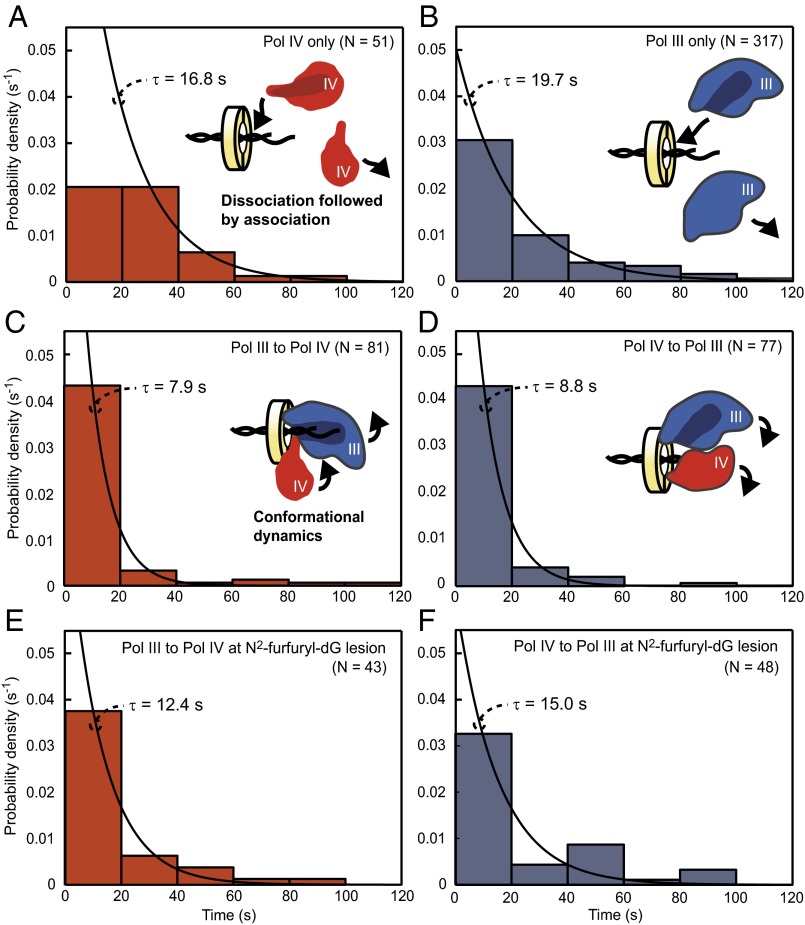Fig. 4.
β acts as a molecular toolbelt for Pol III and Pol IV to promote lesion bypass. Each distribution is fit to an exponential with associated time constant τ. Pauses represent association of a new polymerase from solution in experiments with (A) Pol IV (30 nM) or (B) Pol III alone (5 nM). (C) Exchange from Pol III (5 nM) to Pol IV (30 nM; P < 10−5 vs. A) and (D) back to Pol III (P < 10−9 vs. B) is rapid because of simultaneous binding of both polymerases to the clamp. (E) Exchange to Pol IV at the N2-furfuryl-dG site is also rapid (P < 0.01 vs. A and NS vs. C), indicating that lesion bypass is β-mediated. (F) Exchange back to Pol III is intermediate between B (P = 0.04) and D (P = 0.02), suggesting that both types of exchange occur. SI Experimental Procedures has additional analysis.

